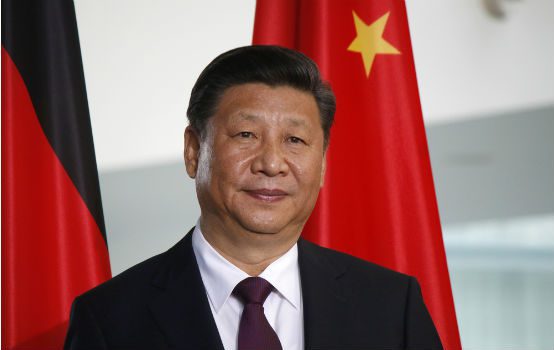China is Weaker Than Xi Will Admit

Xi Jinping, China’s strongman leader, recently gave a strident speech on the centennial of the founding of the Chinese Communist Party in 1921. Predictably, he focused on achievements of the Party and left out significant blemishes—for example the catastrophic Great Leap Forward in the 1950s, the sanguinary Cultural Revolution from the mid-1960s to the mid-1970s, and the suppression of democracy protests in Tiananmen Square in 1989. He also obliquely threatened the interventionism of the United States and the West by saying that foreign powers would “crack their heads and spill blood” if they tried to stop China’s rise. Yet Xi’s bravado hides significant weaknesses that afflict his country.
Ironically, much of the U.S. foreign policy and national security establishment is also using Xi’s speech to help the Chinese leader magnify China’s strengths as a threat to the United States and minimize that country’s weaknesses. What more could a potential adversary ask for? Curiously, in the American political system, interest groups need a potent threat, whether domestic or abroad, to attract public attention and therefore extra cash to their proposed policy program. As during the Cold War with the Soviet Union, the U.S. foreign policy establishment is happy to overstate the threat that China poses to American security while minimizing U.S. strengths and China’s weaknesses.
However, even though the U.S. security establishment inflated the Soviet threat to increase American military spending throughout the Cold War, many at the Pentagon and State Department privately referred to the Soviet Union as “Upper Volta with Missiles,” in a condescending reference to the USSR’s inefficient, creaking, and non-viable communist economy. That economy eventually stagnated and the Soviet political system collapsed as a result. In contrast, in his speech, Xi bragged about all the economic progress that China has made during the Party’s reign. However, he forgot to mention that all of it occurred beginning in the 1980s, after the Party had allowed some sectors of the economy to “go capitalist.” This robust economic growth has probably made China a bigger potential threat to the United States than was the USSR during an earlier period. However, China has major weaknesses that neither Xi nor the U.S. security establishment want to highlight.
China’s first weakness is strongman Xi himself. Instead of selling off inefficient state-owned industries and banks, which still make up a significant portion of the Chinese economy, he is trying to recentralize power. He has done away with the improvement of Hu Jintao, his predecessor as Party leader, which set the expectation that CPP leaders would step down after two five-year terms. This was Hu’s attempt to begin to modernize Communist Party governance by trying to regularize changes of leadership. Instead, Xi is trying to return China to the bad old days of succession struggles after a political strongman (now Xi) dies or is incapacitated. In addition, the private economy continuing to carry the burden of sclerotic state-owned “key” industries and banks will slow Chinese economic growth.
Also likely to slow economic growth is China’s demographic crisis. As countries develop and industrialize, they have fewer children because less labor is needed in the agricultural sector and greater numbers of children raise costs to individual families. Thus, many developed countries around the world have declining birthrates. However, China’s problem is much worse because of the Communist Party’s disastrous “one-child policy,” which was revoked only after it had exacerbated the demographic crisis.
Furthermore, China has restive ethnic inhabitants of Xinjiang and Tibet and a politically unruly pro-democracy population in Hong Kong, which China is suppressing in violation of its promise to allow a “One China, Two Systems” approach. Such fractious populations weaken China internally.
China’s neighbors have complained about its more assertive behavior in the South China Sea, where it claims a ridiculous amount of the waters as its own and builds artificial islands to stretch its tenuous claims. However, as a rising power—which the United States would be wise to tolerate as long the Chinese do not threaten the United States—China should be allowed to have a sphere of influence, as most great powers throughout history have demanded for their security. Any threat China poses is primarily to surrounding regions and perhaps Taiwan. The United States should stay out of intra-Asian territorial disputes, including Taiwan, but could continue to sell weapons to all nations in the region to defend themselves against any Chinese assertiveness, using a porcupine strategy that could deter China from outright aggression.
China’s military threat is mostly to such areas in its “near abroad.” The U.S. security establishment has done much hand wringing about the Chinese economic “Belt and Road” initiative to win friends around the world by building infrastructure projects. However, paraphrasing Betty White, the program is really a colossal waste of Chinese time (and money), with “beneficiary” nations ensnared in debt traps for state-driven boondoggle projects that may even impair economic development. Perhaps the United States should be hoping the Chinese will continue to waste and dissipate their resources on such white elephants.
In short, the United States should manage China’s rise instead of trying to suppress the inevitable. And the American public should not allow its own security establishment to overhype the threat, as it did during the Cold War, to justify spending extravagantly on excessively high military budgets. Such profligate spending can cut into the American economic growth needed to maintain itself as a superpower.
Ivan Eland is senior fellow at the Independent Institute and director of the Independent Institute’s Center on Peace & Liberty. He is the author of War and the Rogue Presidency: Restoring the Republic after Congressional Failure.